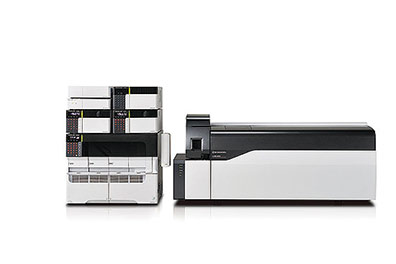LCMS-8050 LC/MS/MS

Enhancements in chromatography and sub-2 micron columns have caused narrower peak widths, increasing resolution. In addition to high-resolution columns, analysts are demanding shorter chromatographic run times while adding more analytes to a single method. With these two factors at play, it is clear that the LCMS-8050 ultra fast mass spectrometer is needed in order to accurately and reliably detect each compound in a sample.

UF Technology Meets UFsensitivity
When one combines ultrafast scan speeds with ultrafast polarity switching and ultrafast MRM acquisition, it is no wonder why a Shimadzu mass spectrometer can reproducibly obtain both quantitative and qualitative data. These three unique pieces of hardware form Shimadzu's UFtechnology, which allows us to be the leader in quantitative mass spectrometry.
UF-MRMIncrease throughput with the capability of simultaneously acquiring 555 MRM channels per second while maintaining accuracy and precision. Utilizing a dwell time of 0.8 msec, the LCMS-8050 can analyze 108 different compounds with multiple transitions per compound in less than 5 minutes. |
UFswitchingA unique high-voltage power supply achieves ultra-high-speed polarity switching time of just 5 msec while maintaining ion intensity with reproducible data. Even when multiple components elute, simultaneously data loss is minimized by the fast polarity switching. This UFswitching provides sufficient data points for even the narrowest peaks obtained. |
UFscanning
The LCMS-8050 delivers the world’s fastest scan speeds of up to 30,000 u/second with a 0.1 Dalton step size without the loss of mass accuracy. Data acquisition occurs so rapidly that triggered MS/MS scans and MRM quantitation can be performed in a single acquisition method.
UFsensitivity – High Sensitivity for Trace Analysis
Both sensitivity and reproducibility are essential when establishing low limits of quantitation. High-precision quantitative results obtained with the triple quad LCMS-8050 demonstrate optimal performance for quantitative analysis of trace components in even the most complex matrix.
Heated ESI Probe
A new state-of-the-art heated ESI probe improves desolvation efficiency to achieve trace detection and quantitation. This probe combines a high-temperature gas with the nebulizer spray, assisting in the desolvation of large droplets and facilitating ionization.
